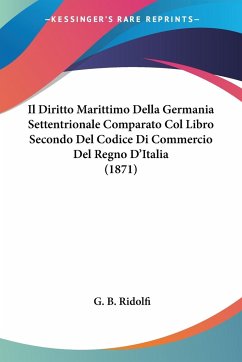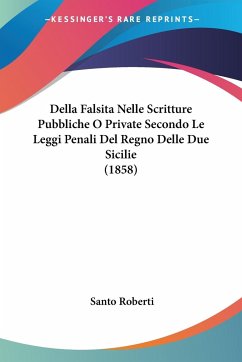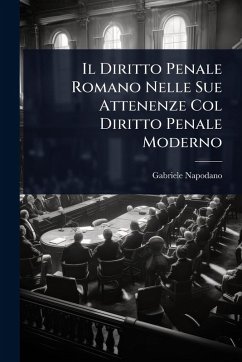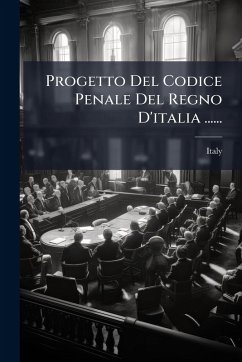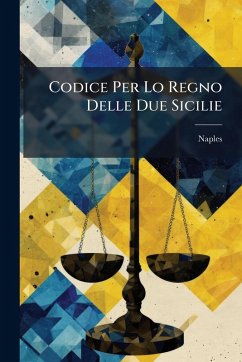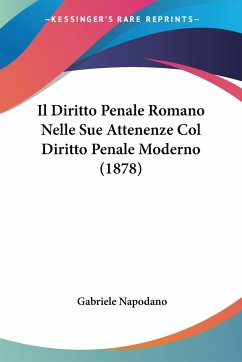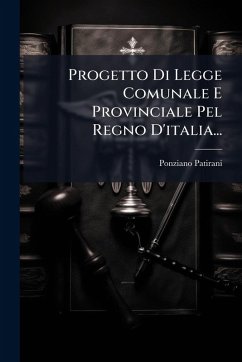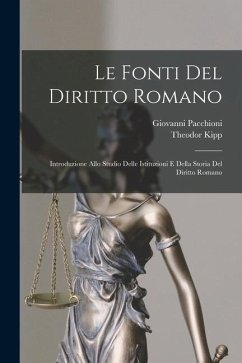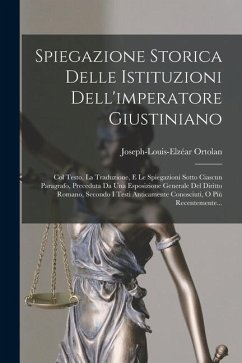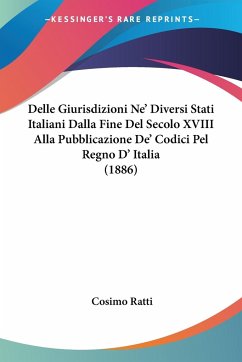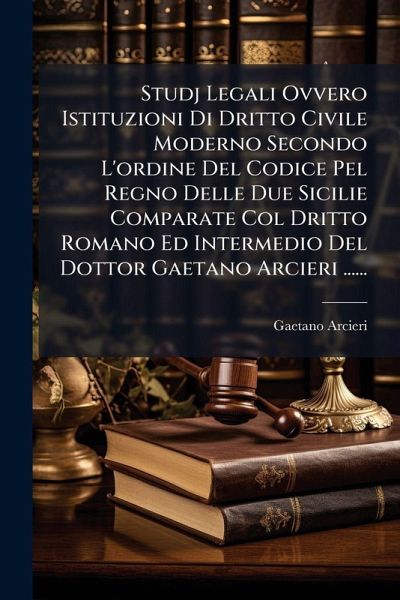
Studj Legali Ovvero Istituzioni Di Dritto Civile Moderno Secondo L'ordine Del Codice Pel Regno Delle Due Sicilie Comparate Col Dritto Romano Ed Intermedio Del Dottor Gaetano Arcieri ......

PAYBACK Punkte
17 °P sammeln!
Studj Legali Ovvero Istituzioni Di Dritto Civile Moderno Secondo L'ordine Del Codice Pel Regno Delle Due Sicilie Comparate Col Dritto Romano Ed Intermedio is a significant legal text by Dottor Gaetano Arcieri. This work provides a detailed examination of civil law within the Kingdom of the Two Sicilies, presented in the context of Roman and intermediate law. It offers valuable insights into the legal framework of the time and the evolution of legal thought. This historical legal study is an important resource for scholars and researchers interested in legal history, Roman law, and the developm...
Studj Legali Ovvero Istituzioni Di Dritto Civile Moderno Secondo L'ordine Del Codice Pel Regno Delle Due Sicilie Comparate Col Dritto Romano Ed Intermedio is a significant legal text by Dottor Gaetano Arcieri. This work provides a detailed examination of civil law within the Kingdom of the Two Sicilies, presented in the context of Roman and intermediate law. It offers valuable insights into the legal framework of the time and the evolution of legal thought. This historical legal study is an important resource for scholars and researchers interested in legal history, Roman law, and the development of civil law in Italy during the 19th century. The comprehensive analysis within "Studj Legali" makes it a critical addition to any legal history collection. This work has been selected by scholars as being culturally important, and is part of the knowledge base of civilization as we know it. This work was reproduced from the original artifact, and remains as true to the original work as possible. Therefore, you will see the original copyright references, library stamps (as most of these works have been housed in our most important libraries around the world), and other notations in the work. This work is in the public domain in the United States of America, and possibly other nations. Within the United States, you may freely copy and distribute this work, as no entity (individual or corporate) has a copyright on the body of the work. As a reproduction of a historical artifact, this work may contain missing or blurred pages, poor pictures, errant marks, etc. Scholars believe, and we concur, that this work is important enough to be preserved, reproduced, and made generally available to the public. We appreciate your support of the preservation process, and thank you for being an important part of keeping this knowledge alive and relevant.



